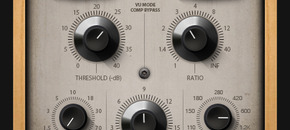Every now and then I’ll come across a good reverb, but it’s almost like trying to find a needle in a haystack, many either suffer quality wise, are redundant, and if they sound good then they’ve got a sub-par user interface (and us producers do like our eye-candy).
Fortunately, the Dreamscape Space Generator is an excellent reverb. Not only does it sound amazing, but it also encompasses a wide variety of modulation possibilities while featuring a visually appealing GUI as well as playing nice with your computer’s CPU.
Unique Features – What Sets it Apart From the Rest?
I’m not a huge fan of ‘simple’ reverbs, unless they sound incredibly good. Granted, they may work fine on a drum hit – but I like to have total control. As expected from the screenshot of the Dreamscape,
I found that not only did I have total control over the reverb sound, I could also take it a step deeper with the modulation section!
The Display
Granted, there are some reverbs out there with nice displays (ArtsAcoustic, LiquidSonic’s Reverberate), and it’s always nice to have a visual representation of the reverb sound your designing.
The Dreamscape features a minimal but helpful display. In the top left corner you’ve got an exact frequency reading of your low and hi cuts, which are named Low Floor and High Ceiling in the plugin.
On the right side, you’ve got the Reverb Start and Reverb End readings, which can help a lot when making fine adjustments to the mix (e.g., compressing reverb: attack and release settings).
In the middle though, you’ve got a nice visual curve of how your reverb is acting. This is affected by the Amplitude Curve and Time Curve parameters. The curve can also be inverted/flipped by turning on the Amp Curve Invert setting, which makes for some interesting sounds.
Synced Pre-Delay
I honestly think that every reverb should have a synced pre-delay. This is awesome!
The pre-delay sync can be turned on and off, and offers all the standard time settings from 1/32, to 1/1 (including d and t).
The great thing about this is that using it in unison with your track can allow you to get some interesting rhythmic effects in time with your song. Maybe you have an offbeat pluck after every second beat – using the pre-delay could provide a ‘ghost-like’ after effect of the pluck on the following offbeat.
And of course, if you want get a more obscure pre-delay, then you can simply turn it off.
The Modulation Section
This, ladies and gentleman, is where things get interesting. Want to blow people away with complex reverb and delay effects? Here’s your solution.
The modulation section allows you to add even more characteristics to your sound by the use of feedback and filters.
One of the things that really stood out to me was how easy it is to use this section. Many complicated delay and reverb modulation systems can be daunting and confusing to operate – not this one though, it’s very easy to get your head around and allows you to get the sound you’re after in mere seconds.
You can choose the length of your delay, the feedback, and another great thing is that you can choose whether or not you want to link L + R together. The ability to link these parameters makes for fast creation, especially when you’re not after complex stereo sounds.
The filter section features 5 filters: Low Pass, High Pass, Band Pass, Band Reject, Peaking.
You can choose different filters for L/R if you’d like to, or even disable them completely.
Reverb On/Off
At first sight, this seems like your typical bypass button.
But it’s not. Clicking this button will turn the reverb off, but leave the modulation section on. If you’re after a dry sounding delay, then this is the magic button.
Ease of Use
For complete beginners, this plugin may be quite scary as it does have a lot of knobs and options. That’s not to say that you wouldn’t be able to learn it, I think anyone could with an hour or two of playing around with it.
If you’ve been producing for a while, then you’ll latch onto this in minutes. After 30 minutes of playing around with the Dreamscape I felt as if I’d been using it for years.
Very intuitive, and very simple to understand despite its many complexities.
Sound Quality
It’s not going to sound as good as an Eventide, (I don’t think any plugin does) but I can assure you that it sounds very decent, especially for the low price tag.
I compared it to Ableton and FL Studio’s stock reverb and found:
- It was a lot warmer
- A lot cleaner
- More ‘real’ sounding
You can interpret that however you want, but the sound quality is, in my opinion – unparalleled in its price range.
Who’s it For?
A plugin like this can be used in any genre, very easily. If you’re a reverb fanatic, you’ll love it. If you’re someone who likes to use reverb in a subtle way, you’ll also love it. If you want to make complex modulated reverbs in minutes, then you’ll need it.
I can personally see myself using this in many tracks, not only as a sound design tool, but also as a mixing tool.
Original - Source - EDMProd






